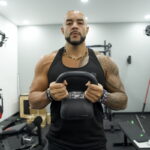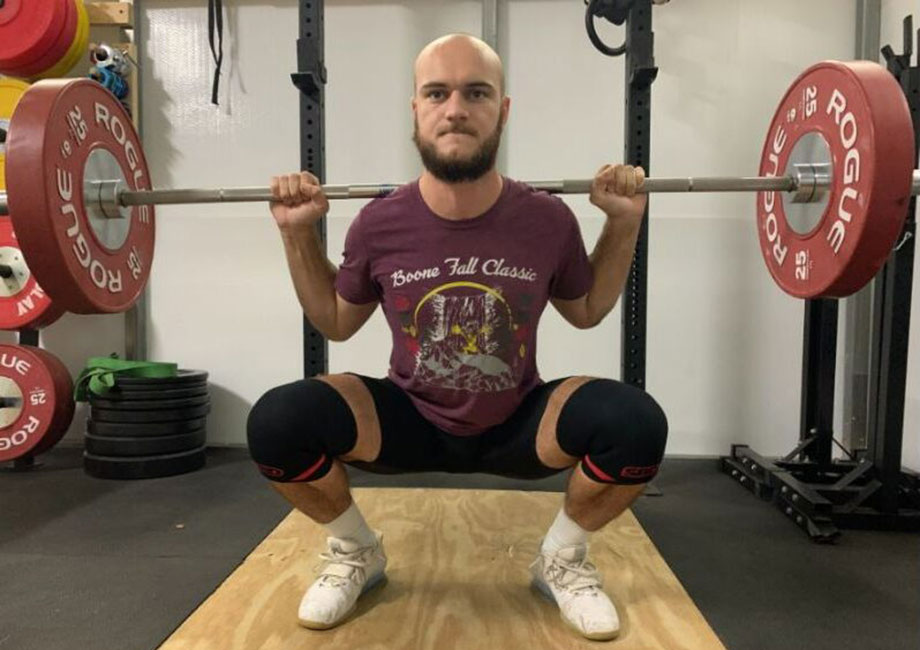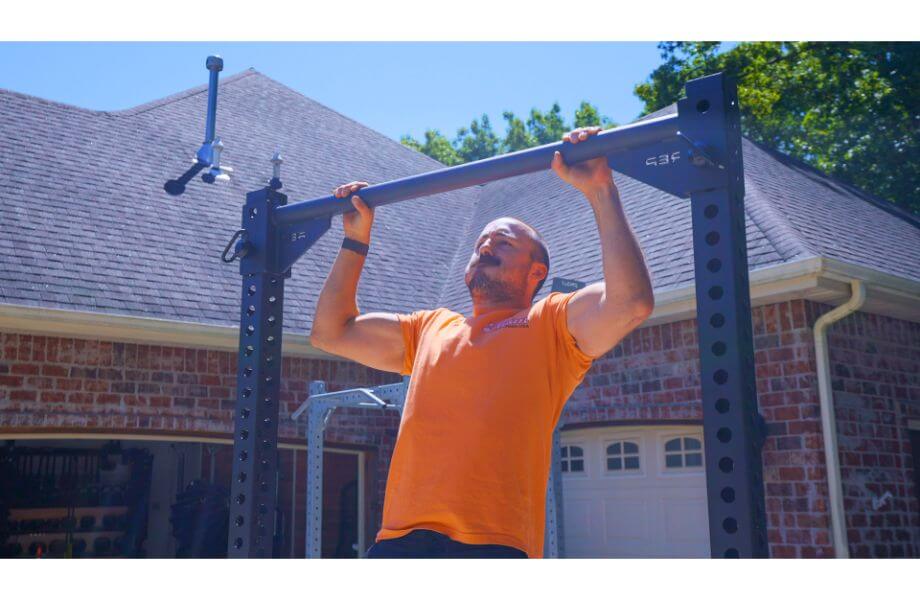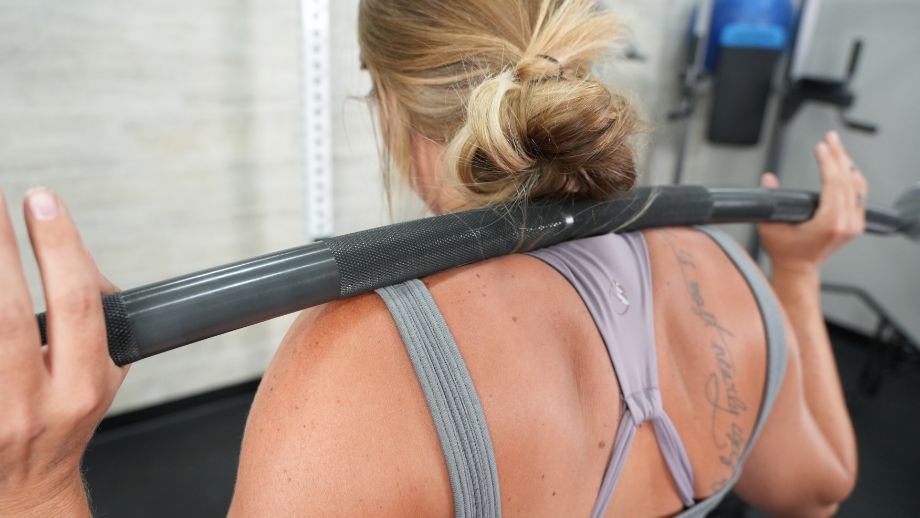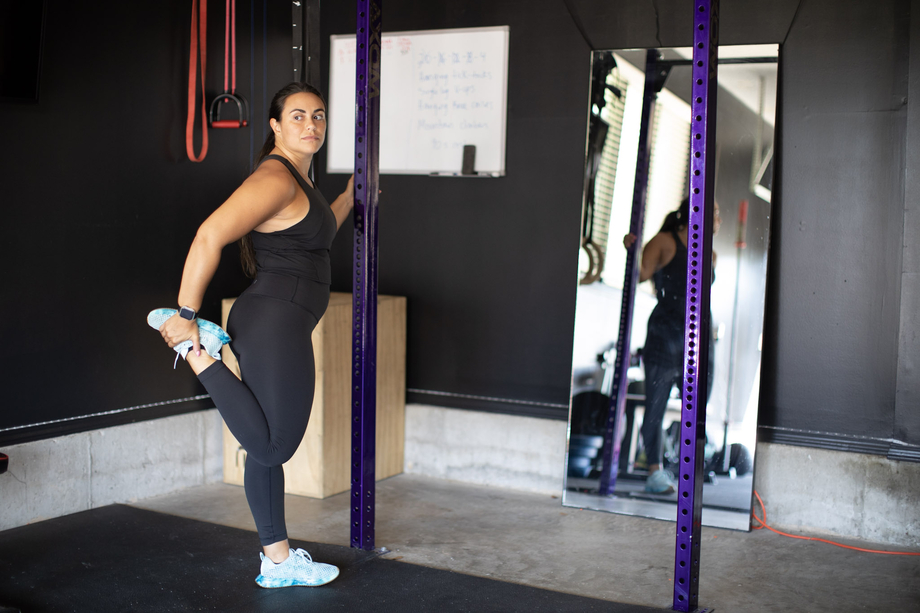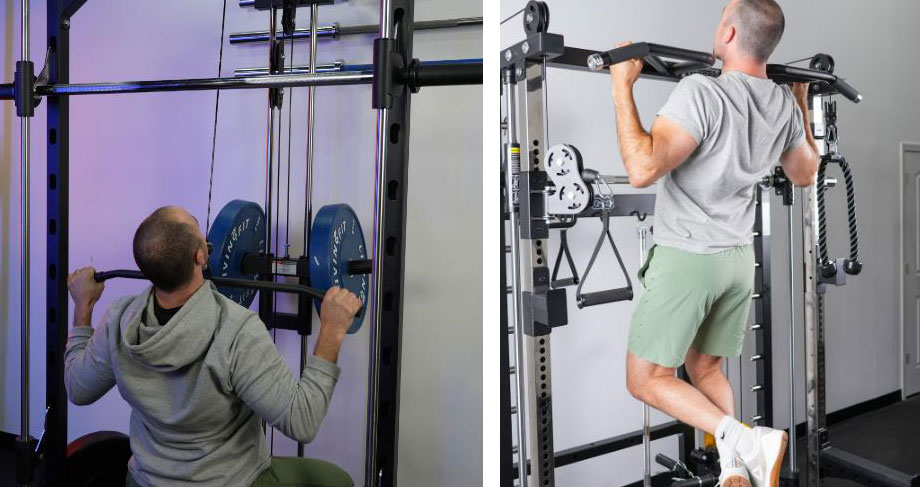Whether you aspire to be a Navy Seal, Army Ranger, Marine, or Air Force member—or you’re a fitness enthusiast who wants to train like the military elite—your path to joining the U.S. military will undoubtedly include many hours of intense training. Each branch has a physical fitness test you must pass to show you have the requisite strength, stamina, and resolve to be fit for duty.
RELATED: Navy Seal Workout
But what exactly should your training program look like if your mission is to embark on a successful military career? As a certified personal trainer and longtime rugby player who’s no stranger to high-intensity sessions, I’ve compiled a list of the best exercises you can include in your military workout routine. To strike a well-balanced approach that’ll prepare you for basic training and beyond, I’ve also put together three goal-specific sessions that you can utilize as a framework to get stronger, fitter, and more confident as you embark on your military journey.
What Is a Military Workout?
A military workout isn’t necessarily about getting ripped or running endless miles—it’s about preparing your body and mind for the rigorous physical and mental demands of military service. This style of fitness training encompasses a wide range of exercises and techniques designed to enhance strength, endurance, agility, and mental resilience.
Military-style training covers all aspects of peak physical performance, from calisthenics and functional movements to challenging obstacle courses and ruck marches.
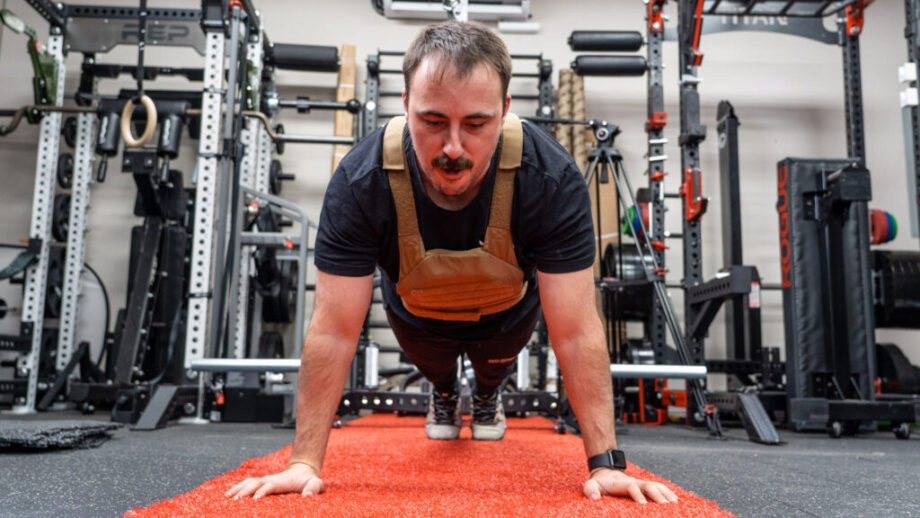
While traditional workout routines may focus solely on muscle isolation or aesthetics (i.e., chest day for bodybuilders), military-style training prioritizes movements that mimic the challenges soldiers face daily. This includes bodyweight exercises like push-ups, pull-ups, and crunches, as well as compound lifts like squats and deadlifts.
RELATED: What Is Functional Fitness?
Military Workout Exercises
- Push-Up
- Pull-Up
- Barbell Squat
- Barbell Deadlift
- Barbell Bench Press
- Military Press
- Barbell Thruster
- Lunge
- Burpee
- Farmer’s Walk
- Ruck March
- Plank
Push-Up
Muscles worked: Pectoralis major, pectoralis minor, deltoids, triceps brachii
Why do it: Push-ups are a fundamental bodyweight chest exercise that help develop muscular strength and endurance in your chest, shoulders, and triceps. Additionally, push-ups require no equipment, and you can easily modify them to suit your fitness level.
How to Do it:
- Start in a plank position with your hands slightly wider than shoulder-width apart and your body in a straight line from your head to heels.
- Lower your body toward the floor by bending your elbows, keeping them close to your sides.
- Stop when your chest is about one inch above the ground, or at a comfortable depth.
- Push through your palms to extend your arms and return to the starting position.
- Repeat for the target number of repetitions.
Modifications
- Dial it back: Perform push-ups on your knees instead of your toes to reduce the amount of body weight being lifted.
- Make it harder: Elevate your feet on a bench or chair to increase the intensity and engage your chest muscles more. Or, try another push-up variation like plyo push-ups to activate your fast-twitch muscle fibers.
Expert tip: Place your hands together in a diamond shape to shift the load to your triceps.
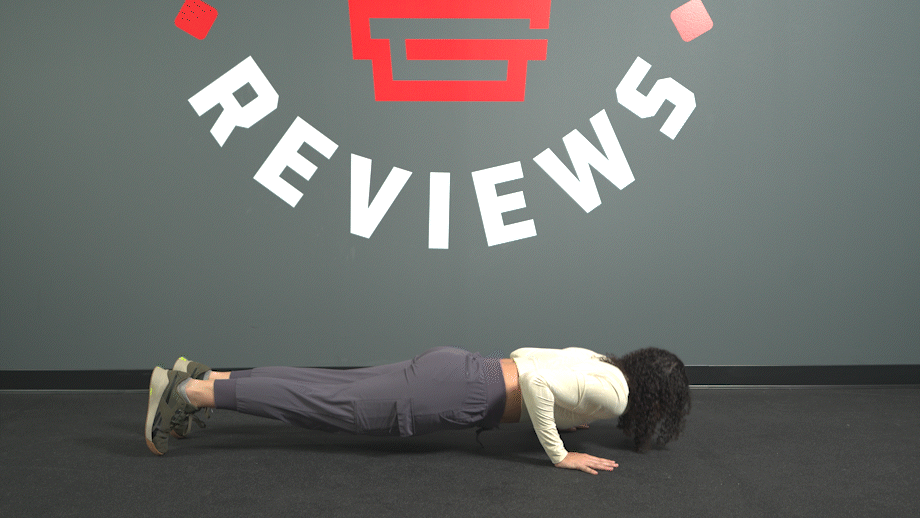
Pull-Up
Muscles worked: Latissimus dorsi, rhomboids, trapezius, biceps, forearms
Why do it: Pull-ups are a compound exercise that strengthens the upper body, particularly the back and arms. They promote functional strength by mimicking movements like climbing or pulling yourself over obstacles—making them valuable for military fitness training. Pull-ups also improve grip strength and activate your core muscles.
How to Do it:
- Grab a pull-up bar with your hands slightly wider than shoulder-width apart using a pronated (overhand) grip.
- Hang with your arms fully extended and engage your core.
- Pull your body upward by bending your elbows, focusing on bringing your chest towards the bar.
- Continue pulling until your chin reaches or exceeds the bar.
- Lower yourself under control until your arms are fully extended.
- Repeat for the desired number of repetitions.
Modifications
- Dial it back: Use an assisted pull-up machine or a resistance band to reduce your body weight. (You can also perform lat pulldowns, which are functionally the same movement pattern.)
- Make it harder: Add weight using a weight belt or hold a dumbbell between your feet to increase the resistance.
Expert tip: Maintain proper form by avoiding excessive swinging or kipping movements, and focus on controlled, smooth repetitions where your chin reaches the bar every time.
RELATED: Best Pull-Up Bar
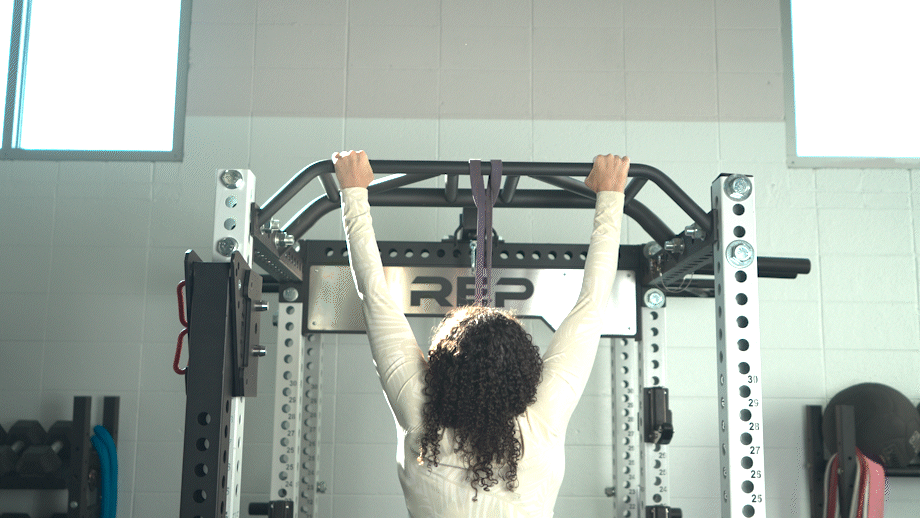
Barbell Back Squat
Muscles worked: Quadriceps, hamstrings, glutes, core
Why do it: The barbell back squats recruit multiple muscle groups to help develop lower-body strength and power. It also can help prevent injuries by strengthening the muscles around the knees and hips.
How to Do it:
- Grab the barbell with a pronated (overhand) grip with your hands slightly wider than shoulder-width apart.
- Create tension in your upper back by squeezing your shoulder blades so the barbell has a “shelf” to rest on.
- Unrack the barbell and take two to three steps back.
- Stand with your feet shoulder-width apart and your toes pointing slightly outward.
- Brace your core, keep your chest upright, and lower yourself until your legs form a 90-degree angle.
- Push through your heels to return to the starting position, squeezing your glutes at the top.
- Repeat for the desired number of repetitions before re-racking the barbell.
Modifications
- Dial it back: Perform squats with a chair or bench behind you for support. Or, start with goblet squats, which require a kettlebell or dumbbell.
- Make it harder: Try variations like pause squats or heel-elevated squats to make this exercise more challenging.
Expert tip: Protect your shoulders by keeping your elbows tucked to your sides rather than letting them flare out.
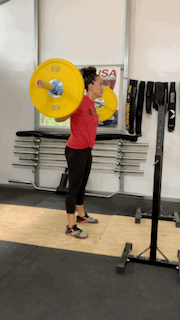
Barbell Deadlift
Muscles worked: Erector spinae, glutes, hamstrings, quadriceps, trapezius, latissimus dorsi, abdominals
Why do it: Deadlifts build a strong, healthy posterior chain by simulating movements like picking up equipment or objects from the ground. Besides promoting better posture and lifting mechanics, they also assist with developing lower-body power and grip strength.
How to Do it:
- Stand with your feet about hip-width apart so that the barbell is positioned directly over your feet.
- Hinge at your hips and knees to lower your torso and grab the barbell with a pronated (overhand grip) with your hands shoulder-width apart.
- Retract your shoulders, brace your core, and keep your chin tucked.
- Drive through your heels and extend your hips and knees to lift the barbell off the ground, keeping it as close to your body as possible to avoid injuring your lower back.
- Stand tall with your hips fully extended, shoulders pulled back, and the barbell held at hip level.
- Lower the barbell back down with control by bending at your hips and knees while maintaining a flat back.
- Repeat for the desired number of repetitions.
Modifications
- Dial it back: Perform deadlifts with lighter weights or use dumbbells instead of a barbell to reduce the load. Focus on mastering proper form and technique before increasing the resistance.
- Make it harder: Try variations like sumo deadlifts or Romanian deadlifts to hone in on specific muscle groups. Sumo deadlifts emphasize the hips and quads, while RDLs blast the hamstrings.
Expert tip: When working with heavier loads, utilize a pair of lifting straps to overcome grip-strength issues.
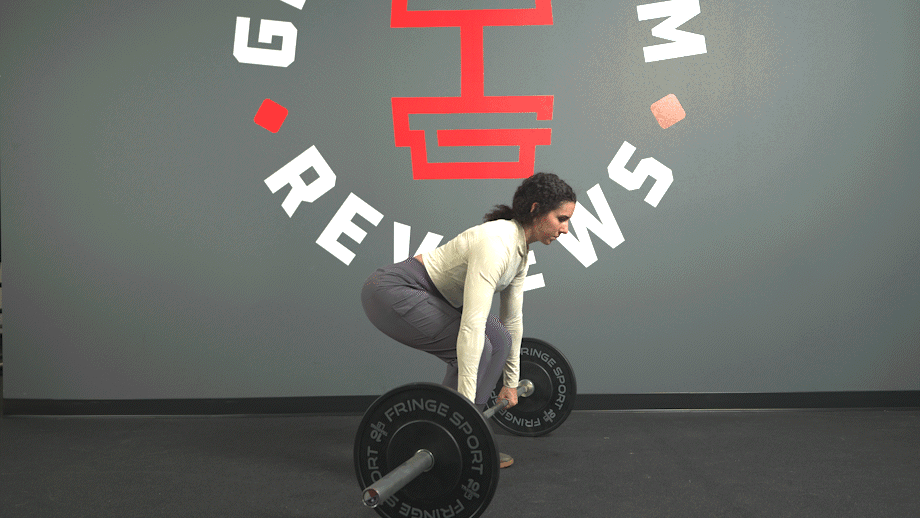
Barbell Bench Press
Muscles worked: Pectoralis major, pectoralis minor, deltoids, triceps brachii
Why do it: The barbell bench press is a push-day staple that builds size and strength in the chest. Additionally, this compound movement engages multiple muscle groups—notably the triceps—promoting functional strength and overall upper-body power.
How to Do it:
- Lie flat on a bench with your feet planted firmly on the ground and your back arched slightly.
- Grab the barbell with your hands slightly wider than shoulder-width apart and your palms facing away from you.
- Brace your core, then unrack the barbell and hold it directly above your chest with your arms fully extended.
- Lower the barbell toward your chest in a controlled manner, keeping your elbows tucked close to your body to protect your shoulders.
- Pause briefly when the barbell touches your chest, then press it back up explosively to the starting position.
- Repeat for the desired number of repetitions, maintaining proper form and control throughout the exercise.
Modifications
- Dial it back: Perform the bench press on a Smith machine for added stability and support. You can also use dumbbells if you don’t feel comfortable working with a barbell.
- Make it harder: Incorporate variations such as paused reps or close-grip bench presses to challenge different muscle fibers and stimulate further growth.
Expert tip: A pair of the best wrist wraps can help provide much-needed support and protection when working with heavier loads.
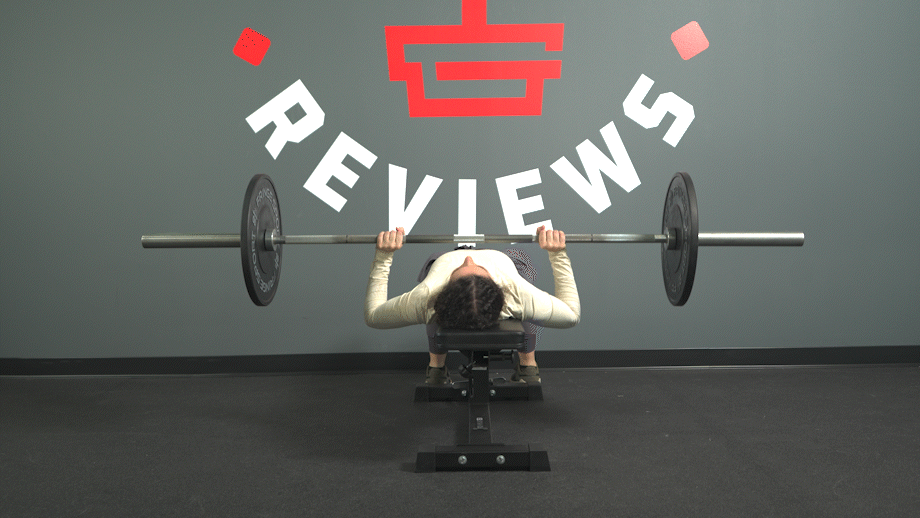
Military Press
Muscles worked: Deltoids, triceps brachii, trapezius
Why do it: The military press—also called the overhead press—builds strength and stability in the shoulders, essential for overhead lifting and push-based movements. Plus, this compound exercise also enhances core stability and coordination.
How to Do it:
- Stand with your feet shoulder-width apart, and grip a barbell with an overhand grip (palms facing forward). The grip should be slightly wider than shoulder-width apart.
- Maintain a neutral spine with your chest up, shoulders back, and core engaged. Unrack the barbell and take two steps back.
- Press the barbell overhead by extending your arms fully, driving the weight directly upward. Exhale as you press the bar overhead.
- Keep the barbell balanced directly above your head with your wrists stacked over your elbows.
- Lower the barbell back down to the starting position, inhaling as you carefully let it touch the top of your chest.
- Repeat for reps.
Modifications
- Dial it back: Use a pair of the best adjustable dumbbells or an overhead press machine if you’re uncomfortable with performing this exercise with a barbell.
- Make it harder: Perform the military press from a seated position to eliminate the ability to generate force with your lower body. You can also make the exercise more dynamic by performing a power press, which involves using your legs to drive the barbell up.
Expert tip: Follow the cue of “keep your knuckles pointed to the ceiling” to avoid straining your wrists.
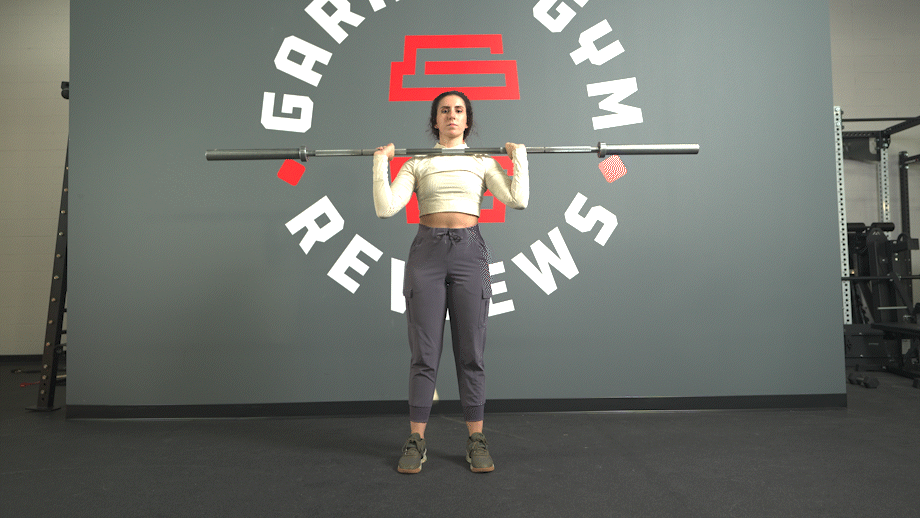
Barbell Thruster
Muscles worked: Quadriceps, glutes, hamstrings, deltoids, trapezius, rhomboids, triceps, core
Why do it: The thruster combines a squat with an overhead press, making it an efficient way to develop strength, power, and coordination. By integrating lower-body and upper-body movements into one fluid motion, this exercise provides a cardiovascular challenge, making it a great addition to high-intensity interval training (HIIT) or CrossFit-style workouts.
How to Do it:
- Stand with your feet shoulder-width apart, holding a dumbbell in each hand at shoulder height with your palms facing inward.
- Lower yourself into a squat position by bending your knees and pushing your hips back, keeping your chest up and core engaged.
- Descend until your thighs are parallel to the ground, making sure to maintain a neutral spine.
- Explosively extend your legs and drive through your heels to return to the standing position.
- Use the momentum generated by the leg drive to press the dumbbells overhead until your arms are fully extended.
- Lower the dumbbells back to shoulder height as you descend into the next squat repetition.
- Repeat the squat-to-press motion for the desired number of repetitions.
Modifications
- Dial it back: Use lighter dumbbells or perform the thruster with just your body weight until you feel comfortable with the movement pattern and can maintain proper form.
- Make it harder: Incorporate variations like single-arm thrusters or perform the movement with a barbell and weight plates once you’ve developed the requisite strength and coordination.
Expert tip: Ensure proper alignment of your wrists, elbows, and shoulders during the overhead press portion to avoid strain on your joints.
RELATED: Thrusters Workout
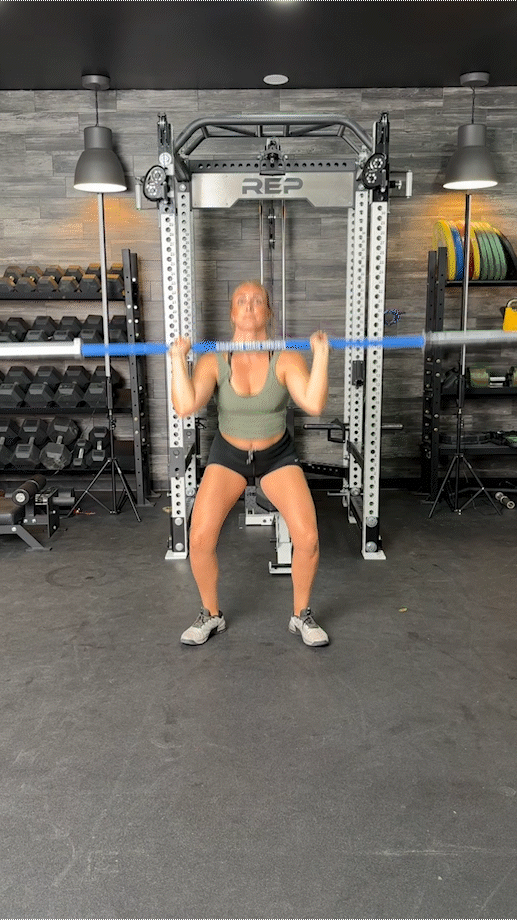
Lunge
Muscles worked: Quadriceps, hamstrings, glutes, calves
Why do it: Lunges are a unilateral exercise that helps correct muscle imbalances and improve lower-body strength and stability. They also increase flexibility and range of motion in the hips and knees, which can help reduce injuries and make activities like running, walking, or traversing uneven terrain easier.
How to Do it:
- Stand tall with your feet hip-width apart while holding a dumbbell in each hand by your side.
- Take a step forward with one foot, landing heel first and bending both knees to lower your body toward the ground.
- Keep the front knee directly above the ankle and descend until your front thigh is parallel to the floor and your back knee is about one to two inches above the floor.
- Push through the heel of your front foot to return to the starting position.
- Repeat on the opposite side, alternating legs with each repetition.
Modifications
- Dial it back: Perform reverse lunges instead of forward lunges to reduce some of the stress on your knees.
- Make it harder: Perform walking lunges for a set distance or period of time to challenge your coordination and endurance.
Expert tip: Keep your torso upright and avoid leaning forward or rounding your back to maintain proper alignment and maximize lower-body engagement.
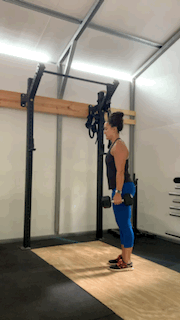
Burpee
Muscles worked: Pectoralis major, pectoralis minor, deltoids, triceps, quadriceps, glutes, hamstrings, hip flexors, core
Why do it: Burpees help improve cardiovascular fitness, muscular endurance, and overall conditioning. They are a functional movement that mimics activities like getting up from the ground quickly or jumping over obstacles, making them highly applicable for military training.
How to Do it:
- Start in a standing position with your feet shoulder-width apart.
- Lower yourself into a squat position and place your hands on the floor in front of you.
- Jump or step both feet back so you form a push-up plank position.
- Perform a push-up by lowering your chest towards the ground and then pressing back up.
- Jump or step both feet forward toward your hands, returning to the squat position.
- Jump upward in an explosive manner with your arms fully extended overhead.
- Land softly and immediately lower back into the next repetition.
Modifications
- Dial it back: Eliminate the push-up component if you’re unable to complete a standard burpee.
- Make it harder: Increase the intensity by performing burpees faster or incorporating variations like burpee tuck jumps or burpee box jumps.
Expert tip: Land softly on the balls of your feet to minimize the impact on your ankle and knee joints.
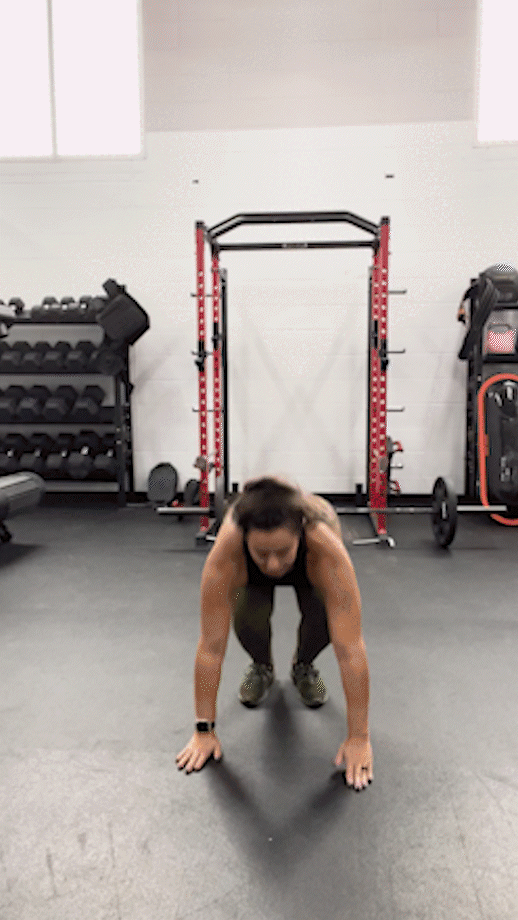
Farmer’s Walks
Muscles worked: Trapezius, rhomboids, forearms, glutes, hamstrings, quadriceps, abdominals
Why do it: Farmer’s walks are a functional full-body exercise that improves grip strength, cardiovascular fitness, and posture. They simulate real-life tasks like carrying heavy equipment, making them particularly useful for prospective or current military personnel.
How to Do it:
- Stand with your feet hip-width apart while holding a heavy dumbbell or kettlebell in each hand.
- Engage your core, keep your chest upright, and begin walking forward in a controlled manner by taking short, quick steps.
- Keep your shoulders back as you walk for a predetermined distance or time.
- Safely lower the weights to the ground once you have finished.
Modifications
- Dial it back: Start with lighter weights or shorter distances to build strength and endurance gradually.
- Make it harder: Challenge your obliques with single-arm farmer’s walks—an example of unilateral training.
Expert tip: Avoid rounding your shoulders to prevent strain on your neck and upper back.
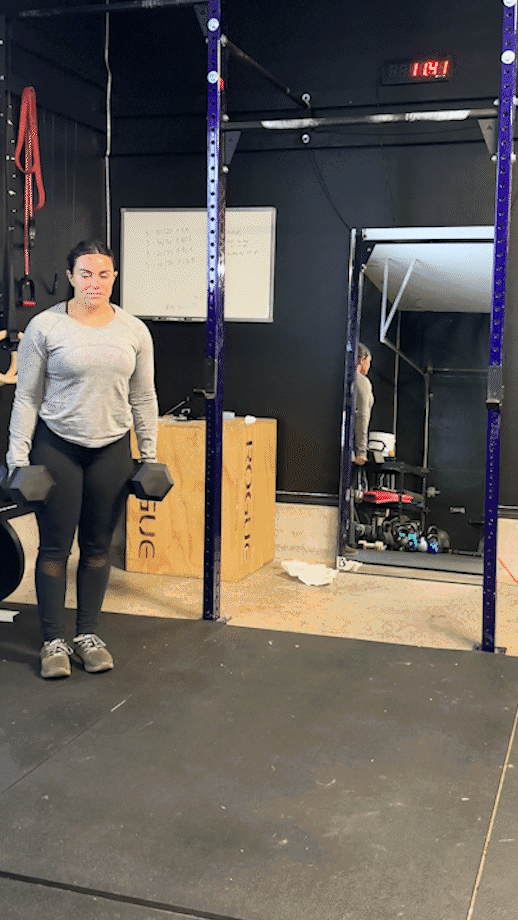
Ruck March
Muscles worked: Quadriceps, hamstrings, glutes, calves, hip flexors, core, trapezius, rhomboids
Why do it: The ruck march promotes proper posture and strengthens the muscles required to carry heavy loads over long distances. In addition to promoting cardiovascular fitness, it also fosters the mental toughness needed to succeed in a military environment.
How to Do it:
- Load a backpack or rucksack with weight and securely fasten it to your back.
- Stand tall with your shoulders back and core engaged, and begin walking at a steady pace.
- Maintain a consistent stride length and pace, focusing on proper foot placement and balance to minimize strain on your joints.
- Continue marching for the desired distance or duration, taking short breaks as needed to rest and hydrate.
Modifications
- Dial it back: Start with a lighter load or shorter distance to gradually acclimate your body to the demands of ruck marching.
- Make it harder: Experiment with different terrains and incline levels to challenge different muscle groups and enhance overall endurance.
Expert tip: Vary the distance, terrain, and load to simulate different conditions.
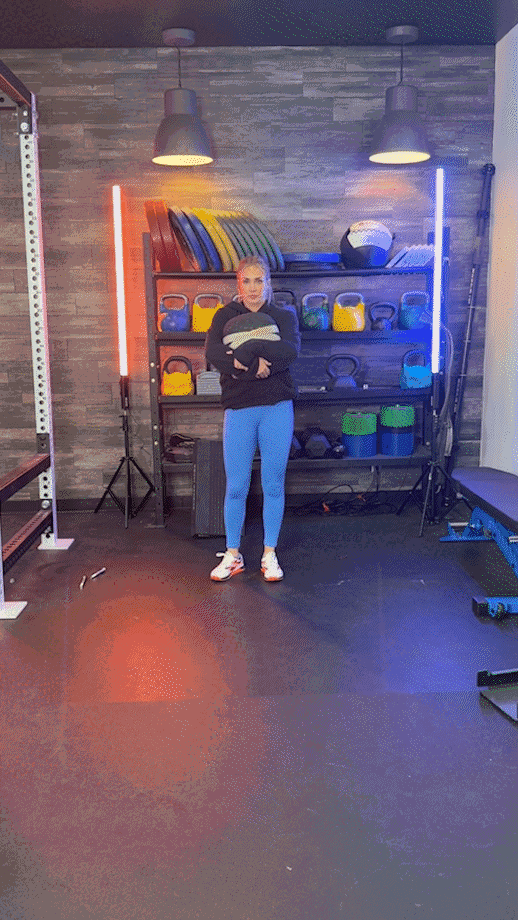
Plank
Muscles worked: Rectus abdominis, obliques, transverse abdominis, erector spinae, shoulder stabilizers
Why do it: Planks are a bodyweight exercise that promotes proper posture and helps develop core strength and stability. You can modify them easily to suit your fitness level. Once you become proficient, you can also explore plank variations that are more dynamic and challenging.
How to Do it:
- Start in a prone position on the floor, propping yourself up on your forearms and toes with your elbows directly beneath your shoulders.
- Contract your core and keep your body in a straight line from head to toe to avoid sagging or arching your lower back.
- Keep your head relaxed with your eyes toward the floor to avoid straining your neck.
- Hold this position for the desired duration.
Modifications
- Dial it back: Perform plank variations on your knees until you can fully support your weight.
- Make it harder: Challenge your core muscles and coordination with side planks, toe-tap planks, or leg-lift planks. Alternatively, you can add resistance by putting a bumper plate on your back or wearing a weight vest while you hold a standard plank position.
Expert tip: Visualize pulling your belly button toward your spine to ensure you maintain proper alignment.
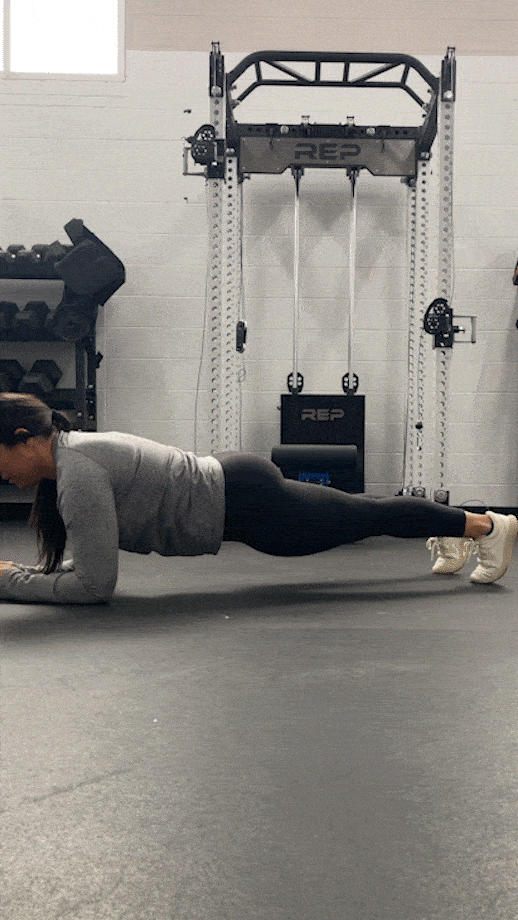
Sample Military Workouts
Below, I outline three workouts you can perform in a rotation throughout the week as part of your military training program. Each workout focuses on foundational movements that have a direct carryover to the demanding nature of a soldier’s lifestyle.
Lower–Body Strength Military Workout
Like a house, your body is only as strong as its foundation. This no-frills lower-body workout will help you build a solid base that supports whatever challenges come your way.
Take adequate rest time for the squats and deadlifts. I recommend at least 90 to 120 seconds, so you’re fully recovered for the next set.
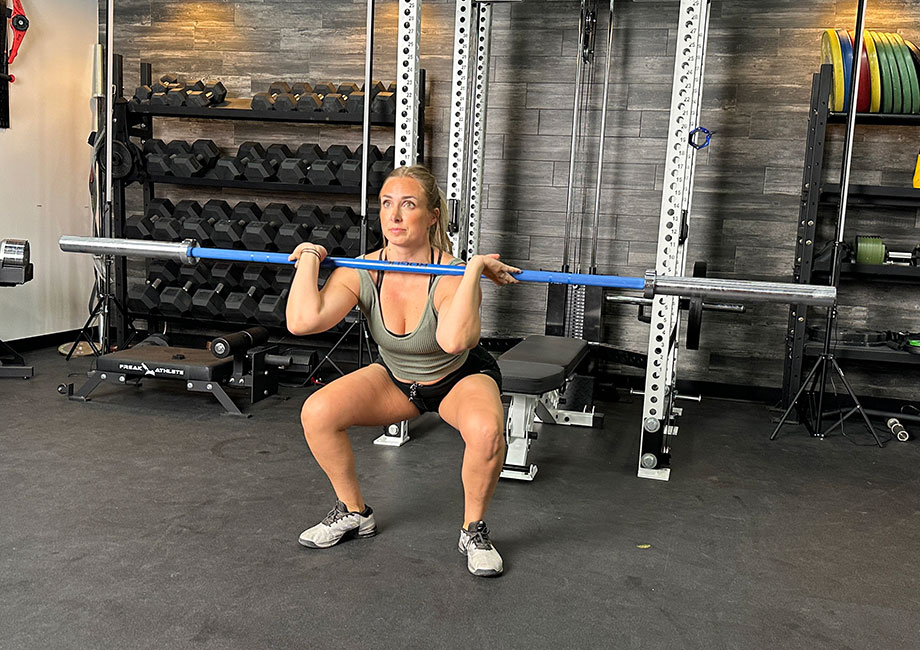
Finishing with thrusters will force your quads, hamstrings, and glutes to step up in the face of fatigue.
Equipment needed: Dumbbells, barbell, weight plates, squat rack
| Exercise | Sets | Reps |
| Dumbbell Lunge | 4 | 10-12, per side |
| Barbell Squat | 5 | 5-8 |
| Barbell Deadlift | 5 | 5-8 |
| Thruster | 4 | 8-10 |
Upper-Body Strength Military Workout
This simple, four-exercise upper-body strength workout will push your triceps, chest, back, and shoulders to the limit—especially if you modify movements to match your fitness level.
For example, beginners may need to start with assisted pull-ups; more advanced athletes can make the exercise more challenging by wearing a weight belt for added resistance.
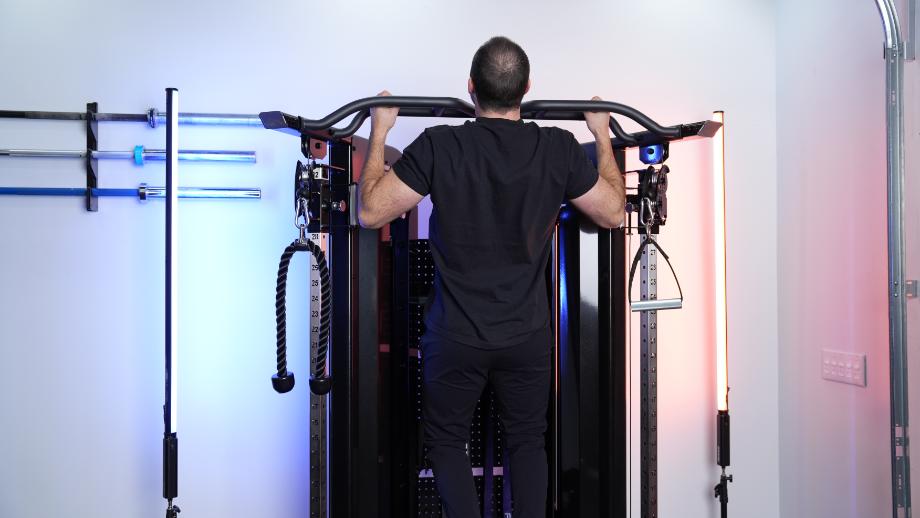
The same goes for the bench press, as you can play with variables like your grip, tempo, and load as you grow more comfortable. Once you’ve mastered this quartet of exercises, you can also incorporate other upper-body movements like biceps curls, triceps pushdowns, and row variations into your training plan for more variety.
Equipment needed: Weight bench, a pair of dumbbells, or a barbell with weight plates
| Exercise | Sets | Reps |
| Push-Up | 4 | 12-15 |
| Pull-Up | 4 | 8-10 |
| Military Press | 4 | 8-10 |
| Bench Press | 5 | 5 |
Full-Body Military Conditioning Workout
With two strength sessions in the books, it’s time to shift the focus toward metabolic conditioning. Although you only have to perform four exercises, don’t underestimate the difficulty of this full-body workout. You can use this plan as a baseline and make things more challenging with a few minor tweaks.
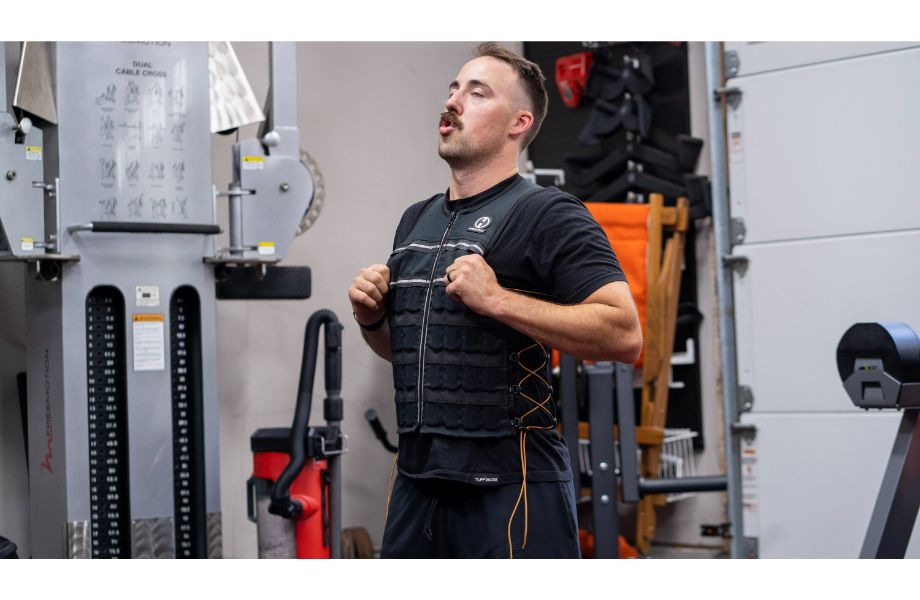
To get started, perform the first three movements for a set duration in a circuit-style fashion. I recommend 30 to 45 seconds of work, followed by an equal or lower amount of rest time. Then, put on a weighted vest or pick up a sandbag and perform a ruck march at a moderate-to-fast pace for 2 to 3 minutes. Once you’ve completed the circuit, rest for another 2 to 3 minutes, then repeat for the desired number of rounds or total time.
Equipment needed: Kettlebells or dumbbells, weight vest or sandbag
| Exercise | Work | Rest |
| Burpee | 30-45 sec | 30-45 sec |
| Farmer’s Walk | 30-45 sec | 30-45 sec |
| Plank | 30-45 sec | 30-45 sec |
| Ruck March | 2-3 min | 2-3 min |
Military Workout Benefits
Military workouts certainly aren’t for the faint of heart. However, there’s a method to the madness, as this intense training can pay off in multiple ways. From preparing your body for the grueling nature of this lifestyle to fostering a feeling of unity, here are some of the benefits of engaging in military-style workouts:
Helps Improve Physical Fitness
Military workouts promote overall physical fitness by incorporating strength, endurance, and cardiovascular training. A 2023 study published in the Journal of Strength and Conditioning Research1 found that high-intensity functional training produced superior training adaptations than traditional military training. Conducting circuit-style sessions can help improve soldiers’ aerobic fitness. When combined with a strength training program that’s sufficient in intensity and volume, you can produce a well-rounded, fit individual.
Helps Enhance Mental Resilience
Military workouts strengthen the body and cultivate mental toughness and discipline. Engaging in physically demanding training sessions challenges individuals to push past their limits, overcome obstacles, and develop a strong sense of determination.
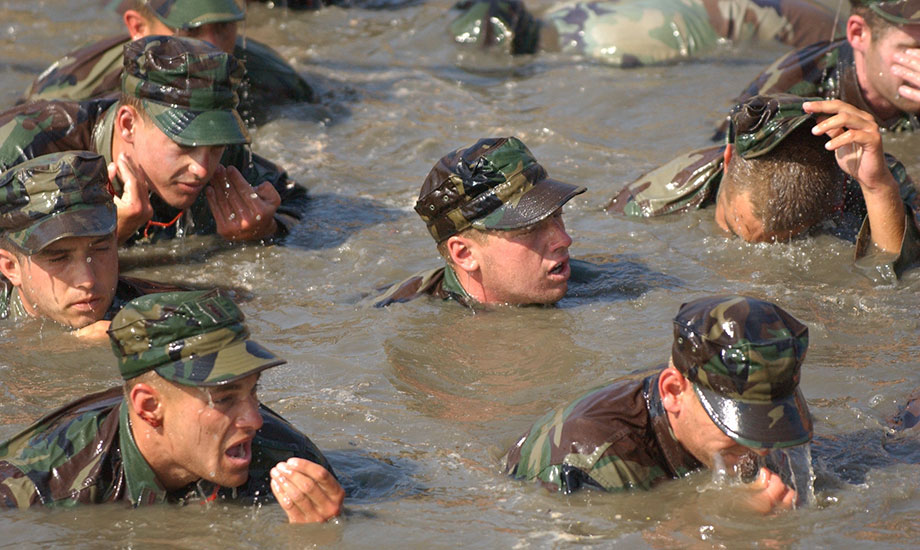
Moreover, research has shown2 that physical exercise can increase the resilience of individuals facing pressure and reduce the incidence of mental illness. Considering how often soldiers and military members deal with high-stress situations, partaking in any activity that strengthens one’s resolve will only help them persevere in the face of adversity.
Promotes Teamwork and Camaraderie
Training together in a group or team setting promotes accountability, motivation, and a shared sense of purpose. As such, military-style workouts can help forge bonds between participants and develop a sense of unity.
Research has shown that group-based exercise programs can enhance social connectedness and cohesion—important factors in maintaining long-term exercise adherence. A 2019 study3 found that when exercisers’ perceptions of groupness were higher during fitness classes, they exerted more effort and held higher perceptions of enjoyment.
RELATED: Benefits of Fitness Communities
So, while there’s nothing wrong with the solo workout approach, training alongside fellow self-motivated individuals can push you to perform at a higher level and foster accountability and camaraderie within the group.
Military Workout: Final Thoughts
Following a multi-modality fitness program puts you on a path toward a successful military career. While each branch has its requirements, you should dedicate your time, attention, and effort to building strength via compound lifts, increasing your cardiovascular fitness by mixing HIIT activities like sprints, lower-intensity runs, and ruck marches, and developing core strength and agility.
The exercises and sample workouts I selected should serve as a starting point. As you improve, don’t be afraid to ramp up the intensity with heavier loads, additional movements, and more challenging variations. Although it’s impossible to truly replicate what it’s like on the battlefield, putting yourself through tough training sessions will sharpen your mind, strengthen your body, and show you can conquer whatever’s thrown in your path.
Military Workout: FAQs
How do you train like you’re in the military?
Training like you’re in the military involves adopting a well-rounded exercise routine that emphasizes compound strength training movements like squats, deadlifts, and bench presses, cardiovascular activities like mile runs, swimming, or ruck marches, and calisthenics like push-ups, pull-ups, and sit-ups.
RELATED: 7 Workout Programs For Veterans
Integrating team-based challenges and mental resilience-building exercises can further replicate the military training experience.
Do soldiers work out every day?
While soldiers may engage in daily physical training during intense training periods or deployments, their workout frequency can vary depending on mission requirements and individual training goals. However, it’s important to note that rest and recovery are crucial components of any training program, and soldiers typically incorporate rest days4 into their training schedule to allow their bodies to recuperate.
What is the best military workout?
While there isn’t a one-size-fits-all approach, the best military workouts incorporate a combination of cardiovascular and strength training, core exercises, and functional movements. Focusing on compound movements like squats, deadlifts, and presses will build muscle, power, and overall strength.
RELATED: Functional Core Exercises
Meanwhile, cardio and core training will help develop a well-rounded, fit individual who can withstand the physical and mental toll of a military lifestyle.
References
- Helén J, Kyröläinen H, Ojanen T, Pihlainen K, Santtila M, Heikkinen R, Vaara JP. High-Intensity Functional Training Induces Superior Training Adaptations Compared With Traditional Military Physical Training. J Strength Cond Res. 2023 Dec 1;37(12):2477-2483. doi: 10.1519/JSC.0000000000004559. Epub 2023 Jun 29. PMID: 37387578; PMCID: PMC10671205.
- Wu K, Wang S, Ding T and Li Y (2023) The direct effect of exercise on the mental health of scientific and technological professionals and the mediating effects of stress, resilience, and social support. Front. Public Health 11:1074418. doi: 10.3389/fpubh.2023.1074418
- Graupensperger S, Gottschall JS, Benson AJ, Eys M, Hastings B, Evans MB. Perceptions of groupness during fitness classes positively predict recalled perceptions of exertion, enjoyment, and affective valence: An intensive longitudinal investigation. Sport Exerc Perform Psychol. 2019 Aug;8(3):290-304. doi: 10.1037/spy0000157. PMID: 31548915; PMCID: PMC6756792.
- Yang Y, Bay PB, Wang YR, Huang J, Teo HWJ, Goh J. Effects of Consecutive Versus Non-consecutive Days of Resistance Training on Strength, Body Composition, and Red Blood Cells. Front Physiol. 2018 Jun 18;9:725. doi: 10.3389/fphys.2018.00725. PMID: 29967584; PMCID: PMC6015912.

